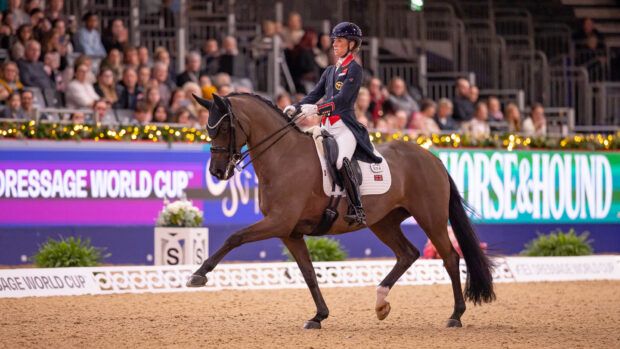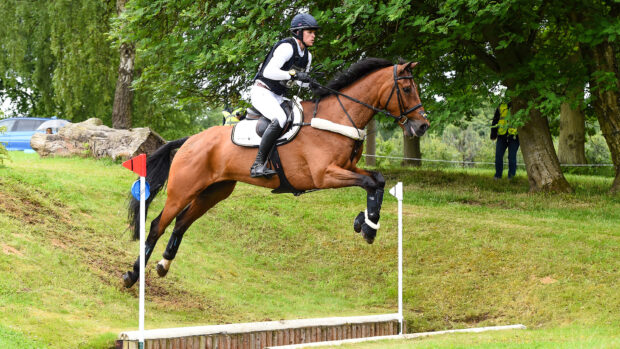We’ve all marvelled at Mount St John Freestyle’s enormous extended trot, and exceptional levels of cadence in her grand prix tests with Charlotte Dujardin (pictured). But, if you watch the mare in the early stages of her warm-up, or while cooling down after a performance, her natural paces are less impressive than you might imagine.
Similarly, Anna Ross’ talented eight-year-old mare Habouche (Holly) has a fairly ordinary looking trot at first glance, but has the ability to transform into a dancing powerhouse, seemingly at the push of a button.
“I actually like horses who tend to trot quite normally — they tend to stay sound for longer and longevity is so important,” Anna explains.
Thought this would be fun to share. It’s yours truly and Holly (I must have prised Beth Bainbridge off her somehow ?) showing how she trots ‘normally’ and how it can be developed. I love horses that can move like this as they put less pressure on themselves. In a lot of her daily training the trot is quite simple for all the loosening work but when we push the button she’s ready. Never disregard a ‘boring’ trot with a good mechanic.. you might not win a young horse class but you may well be laughing at the end on your nice sound GP superstar ?
Posted by Anna Ross – Elite Dressage on Sunday, June 30, 2019
So how do you start to transform your horse’s trot from ordinary to spectacular? Anna shares her top tips:
1. The first trick is to sort the ones who can’t move that well from the ones who look like that now, but have the ability to produce more. I look for a particular type of mechanic in the trot — whether they move through the body, or only through the legs. One of the best ways to tell is to watch them move laterally, and see how much a horse can lift their forearm. Any horse whose movement improves when they go sideways is probably a horse whose trot can be improved.
2. To be able to push forwards and sideways, a horse has to be available to the rider on the aids. They should be alert, like a boxer. Ride forward and back within the pace, and make sure the horse can go forward even in places that they might not expect to, around the short side of the arena for example.
3. Making a horse ‘hot’ is not the answer to improving their trot. A lot of people tend to put their horse behind the bit and create a lot of electricity, but the horse needs to be supple enough to move through their body and back, and the rider must be supple enough to allow this and to let the horse out on the end of the rein. You should be trying to achieve relaxation and swing.
4. Remember that cadence has nothing to do with speed, or even many people’s idea of ‘forwardness’. If you are just creating a bigger trot through momentum it’s no good to you. The horse must be truly connected between hand and leg in order to produce more airtime in the trot.
5. Practice lots of transitions — it’s boring but effective. We do a lot of trot-nearly walk-trot with our horses. Lateral work is useful too, such as a leg yield zig-zag — ride the leg yield one way, then ride forward, then the other way, then forward again.
6. A big extended trot is not the be-all or end-all — in some horses it’s actually the last thing that you get. But at grand prix it is not the most important thing and there are many more marks to be picked up for other things. I’d much rather have a horse with an unbelievable piaffe than an unbelievable extended trot.

What does Charlotte Dujardin do while schooling at home? We find out…
Learn more about how Charlotte trains her horses at home

Sandwich rounds to a Pinterest obsession: 11 things you probably never knew about Anna Ross
From sandwich rounds to her Pinterest obsession, here are 11 things you probably never knew about Anna Ross

Subscribe to Horse & Hound magazine today – and enjoy unlimited website access all year round
For all the latest equestrian news and reports, don’t miss Horse & Hound magazine, out every Thursday




